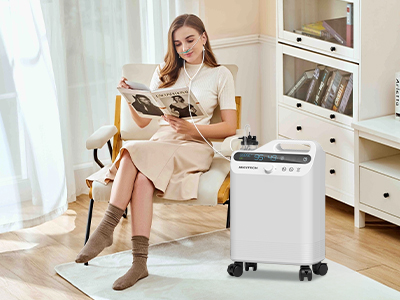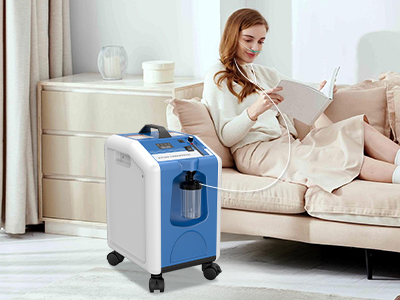26 May 2025
Oxygen therapy is no longer confined to the image of a grandparent reclining in a padded armchair. The reality? It’s become a modern accessory in the lives of many young adults navigating respiratory health challenges with boldness and grit. With sleek devices, smart tech, and a growing awareness of invisible illnesses, today’s oxygen user might just be the person ahead of you at a café, cannula subtly in place.
Young adults face a unique juxtaposition: balancing the vibrancy of youth with the vigilance required by chronic illness. Oxygen therapy, once seen as a limitation, is now part of a larger story of adaptation and resilience.

Why Young Adults Might Need Oxygen Therapy
The misconception that supplemental oxygen is reserved for the elderly is not only outdated—it’s dangerous. Young adults can suffer from a range of conditions that quietly undermine oxygen saturation. Think pulmonary hypertension, cystic fibrosis, severe asthma, congenital heart defects, or post-viral lung scarring. Some battle complications of autoimmune diseases or post-COVID syndromes.
Each diagnosis may differ, but the solution is often the same: give the body what it craves—oxygen.
The Science Behind Oxygen Therapy
Oxygen is not just a gas—it’s a cellular whisperer. Every organ, every system, functions in deference to this elemental elixir. When the lungs falter, cells suffer. Hypoxemia—the stealthy thief of stamina—can sabotage memory, slow metabolism, and strain the heart.
Oxygen therapy intervenes by restoring equilibrium. It prevents long-term damage, fortifies immune response, and revives energy levels that have quietly eroded over time. This is not a bandage—it’s restoration on a molecular level.
Types of Oxygen Delivery Systems for Active Lives
Mobility and discretion matter. Enter: portable oxygen concentrators—lightweight, whisper-quiet, and sleek enough to look like a smart bag. These devices pull ambient air, purify it, and deliver oxygen with algorithmic precision. No tanks. No refills. Just freedom.
At home, stationary concentrators provide reliable, long-duration oxygen flow. Some young adults use a hybrid approach—plugged in while binge-watching at home, mobile when out conquering the world. Versatility is key.
Integrating Oxygen Therapy Into a Young Adult Lifestyle
Let’s be real—navigating oxygen tubing on a first date is nobody’s dream scenario. But vulnerability, framed right, can become strength. A clear explanation, a touch of humor, and confidence in one’s own story can dissolve discomfort.
At work or school, practical adjustments—like power outlets, extra tubing length, or silent concentrators—can make the difference between retreat and participation. The goal isn't perfection; it's presence.
Activity breeds vitality, and oxygen therapy makes that possible without compromising safety or comfort.

Fitness, Travel, and Freedom
Yes, you can jog with a concentrator. Maybe not a marathon, but a 30-minute elliptical session with oxygen support? Absolutely doable. Exercise with supplemental oxygen boosts endurance, prevents post-workout crashes, and helps condition compromised lungs.
Travel? Most airlines accommodate portable concentrators with advance notice. Road trips? Even easier. Pack extra batteries, a charger, and a backup cannula. Oxygen shouldn’t tether you to home—it should empower your next adventure.
Mental and Emotional Well-being
Wearing oxygen in public can invite stares, whispers, and unsolicited sympathy. But it can also spark connection, curiosity, and advocacy. Navigating this mental terrain requires grace and grit.
Therapy, peer groups, and online communities offer solidarity. Sometimes, the most healing words come from someone else who knows what it’s like to tape a cannula to their face before a Zoom call. Mental health isn’t an accessory—it’s part of the prescription.
Technology and Innovation in Oxygen Therapy
Today’s concentrators aren’t your grandmother’s devices. We’re talking Bluetooth connectivity, app-controlled oxygen flow, rechargeable batteries, and ultra-quiet operation. Some even track your respiratory stats like a Fitbit for your lungs.
Design has caught up with function. Sleek contours, stylish carrying cases, and ergonomic cannulas mean you can be oxygen-supported and fashion-forward. It's clinical meets cool.
Communicating with Care Teams
Don’t wait for your next appointment to speak up. Symptoms fluctuate. Needs evolve. Keeping a digital or handwritten log of oxygen levels, fatigue patterns, and emotional health gives providers the data they need to tailor care.
Young adults should feel empowered to ask questions, push for second opinions, and challenge outdated assumptions. Personalized medicine starts with personalized communication.
Conclusion: Breathing Life into Possibility
Oxygen therapy is not a setback. It’s not a pause. It’s a propulsion forward—with more clarity, more stamina, more life. For young adults, it's not about fitting into the mold of the “ideal patient.” It’s about rewriting what wellness looks like—tubes, tanks, tech and all.
Breathing should never be taken for granted. With the right support, equipment, and mindset, every breath becomes a quiet act of revolution.
Keywords: oxygen therapy
Originally published 26 May 2025, updated 26 May 2025.